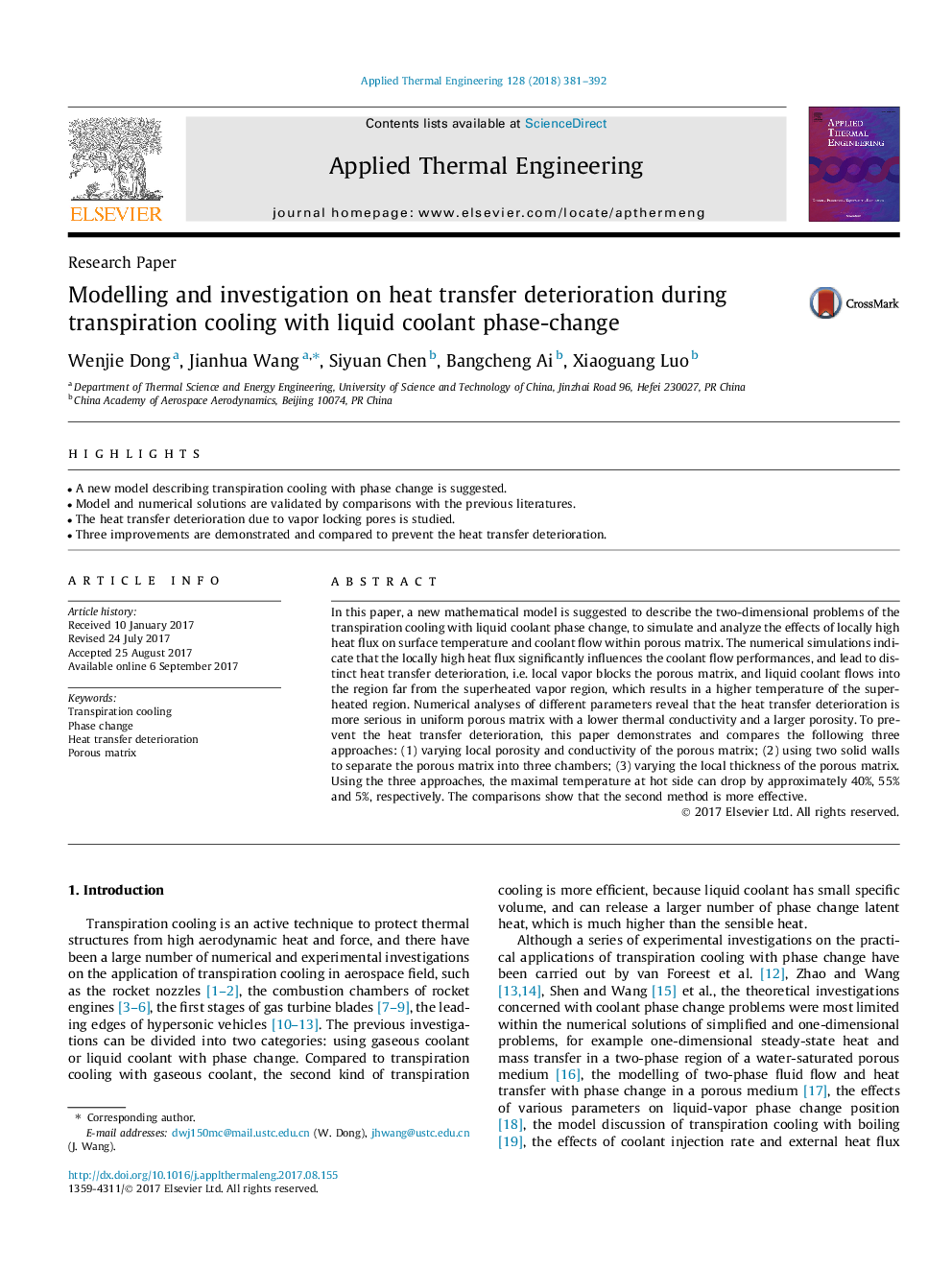| Article ID | Journal | Published Year | Pages | File Type |
|---|---|---|---|---|
| 4990828 | Applied Thermal Engineering | 2018 | 12 Pages |
Abstract
In this paper, a new mathematical model is suggested to describe the two-dimensional problems of the transpiration cooling with liquid coolant phase change, to simulate and analyze the effects of locally high heat flux on surface temperature and coolant flow within porous matrix. The numerical simulations indicate that the locally high heat flux significantly influences the coolant flow performances, and lead to distinct heat transfer deterioration, i.e. local vapor blocks the porous matrix, and liquid coolant flows into the region far from the superheated vapor region, which results in a higher temperature of the superheated region. Numerical analyses of different parameters reveal that the heat transfer deterioration is more serious in uniform porous matrix with a lower thermal conductivity and a larger porosity. To prevent the heat transfer deterioration, this paper demonstrates and compares the following three approaches: (1) varying local porosity and conductivity of the porous matrix; (2) using two solid walls to separate the porous matrix into three chambers; (3) varying the local thickness of the porous matrix. Using the three approaches, the maximal temperature at hot side can drop by approximately 40%, 55% and 5%, respectively. The comparisons show that the second method is more effective.
Related Topics
Physical Sciences and Engineering
Chemical Engineering
Fluid Flow and Transfer Processes
Authors
Wenjie Dong, Jianhua Wang, Siyuan Chen, Bangcheng Ai, Xiaoguang Luo,
